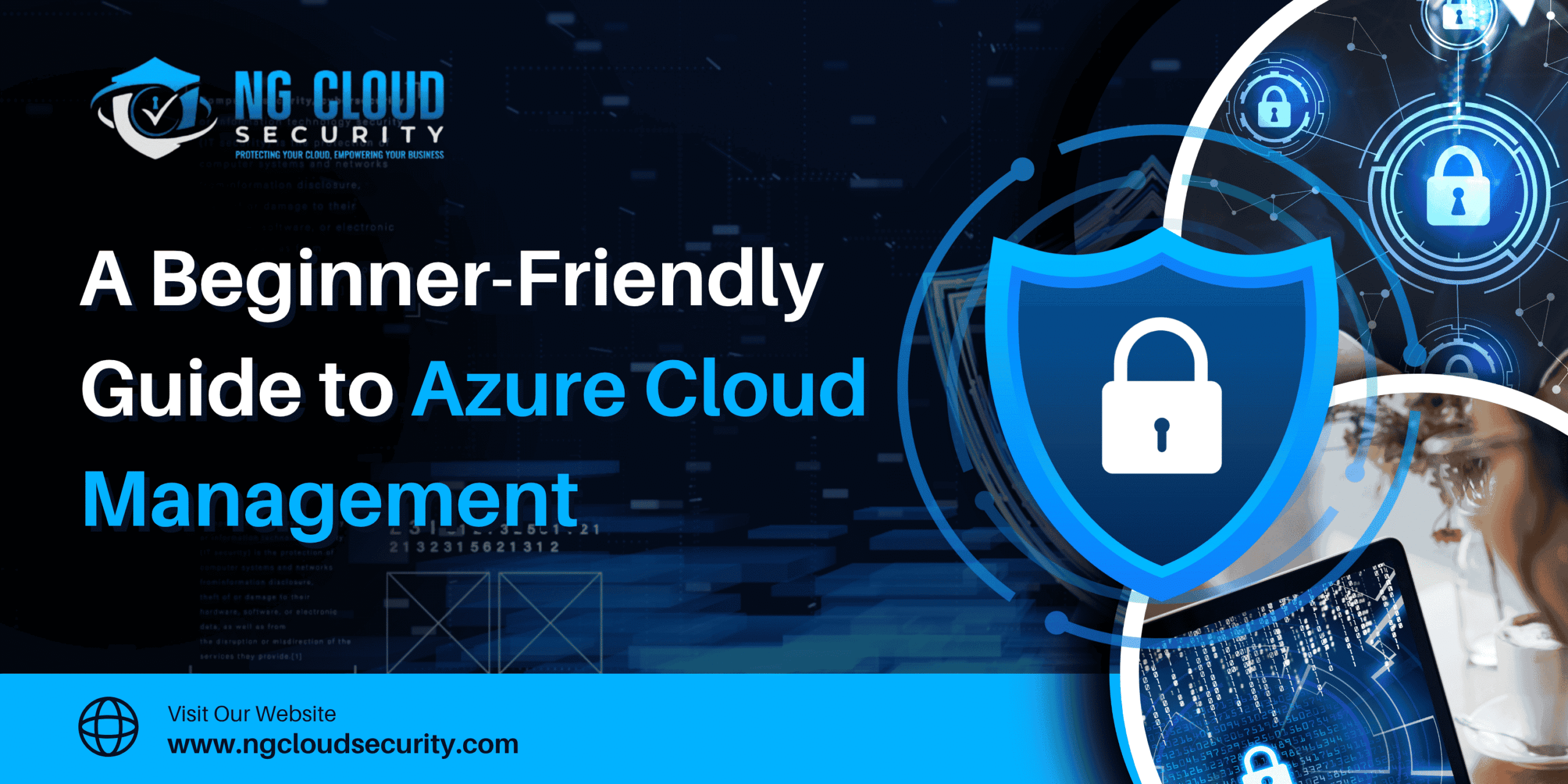Blog
- Home
- Blogs
- Cloud Management
- A Beginner-Friendly Guide to Azure Cloud Management
A Beginner-Friendly Guide to Azure Cloud Management

Managing cloud infrastructure can be overwhelming, especially for businesses just beginning their cloud journey. Microsoft Azure offers a robust set of services to help you deploy, manage, and scale your workloads but without a clear strategy, this can lead to higher costs, reduced visibility, and increased security risks.
In this guide, NG Cloud Security walks you through the essentials of Azure Cloud Management, from core concepts to best practices and optimization tools.
What is Azure Cloud Management?
Azure Cloud Management is the practice of overseeing, operating, and optimizing Microsoft Azure resources, including virtual machines, applications, and cloud services. It involves configuring environments, ensuring security, monitoring usage, and automating tasks for efficiency.
Effective cloud management on Azure includes:
- Deployment and configuration of resources
- Monitoring system performance and uptime
- Security enforcement and threat protection
- Backup and disaster recovery planning
- Cost tracking and optimization
- Governance and compliance setup
With Azure’s native tools and partner solutions, you can take control of your cloud environment, ensuring it meets business, operational, and security goals.
Why Is Azure Cloud Management Important?
For organizations using a hybrid Microsoft ecosystem, combining Azure with Microsoft 365 Consulting services ensures a well-aligned, secure, and fully optimized digital environment. Expert consultants help bridge gaps between productivity and infrastructure management.
Proper cloud management helps you maximize ROI from your Azure investments. Here are key benefits:
- Improved Security: Enforce access controls and threat detection with tools like Microsoft Defender for Cloud and Azure Firewall.
- Increased Availability: Monitor system health to maintain uptime and ensure service reliability.
- Disaster Recovery: Use tools like Azure Backup and Site Recovery to prepare for unexpected failures.
- Better Performance: Identify and resolve performance bottlenecks before they impact users.
- Complete Visibility: Centralize monitoring for better decision-making and integration.
- Cost Efficiency: Analyze spending, set budgets, and track cloud usage to avoid bill shock.
- Hybrid & Multi-Cloud Flexibility: Integrate Azure with other environments without compromising control.
Common Azure Cloud Management Challenges
Despite the benefits, Azure Cloud Management has its hurdles:
- Complex Environments: Managing a large number of services can increase complexity.
- Need for Specialized Skills: Azure requires in-depth knowledge of cloud computing and platform-specific best practices.
- Costs Can Escalate Quickly: Without optimization, monitoring tools and resource usage can significantly raise cloud bills.
- Security Risks: Organizations must ensure compliance and data protection on their own.
- Limited Personalized Support: Tailored assistance for complex environments may require third-party consultants.
The 6 Core Azure Cloud Management Areas
To streamline your management strategy, Microsoft categorizes Azure Cloud Management into six key areas:
1. Migration
Seamlessly move workloads from on-prem or other clouds to Azure using tools like Azure Migrate. This includes assessing infrastructure, right-sizing, and tracking the progress of your migration.
2. Configuration
Automate and standardize resource setups with Azure Automation, ensuring consistency and reducing manual errors across environments.
3. Security
Protect your resources with Azure-native tools like Microsoft Defender for Cloud, Azure Firewall, and Microsoft Sentinel to detect, analyze, and respond to threats effectively.
4. Protection
Minimize downtime with Azure Backup and Azure Site Recovery, enabling fast recovery and business continuity in case of disruptions.
5. Monitoring
Gain real-time insights with Azure Monitor, helping you track metrics, logs, and events across your entire infrastructure on-premises or in the cloud.
6. Governance
Maintain compliance and enforce policies using Azure Policy and Azure Cost Management. Define usage boundaries, monitor spend, optimize billing practices, and ensure secure collaboration across tenants with Microsoft 365 Tenant Management best practices.
Optimize Azure Costs With Intelligent Solutions
Azure’s native tools, like Cost Management and Billing, offer cost tracking features, but often lack granularity. For in-depth, real-time cost insights, third-party platforms like Cloud Zero can:
- Break down cloud costs by product, team, or customer
- Track tagged and untagged resource costs
- Monitor usage and spending hourly
- Support Kubernetes, Snowflake, Databricks, and multi-cloud environments
This visibility empowers you to make data-driven decisions to reduce waste and improve efficiency.
Conclusion
Azure Cloud Management is essential for maintaining a secure, efficient, and cost-effective cloud environment. By focusing on the six management areas Migration, Configuration, Security, Protection, Monitoring, and Governance. You can simplify operations and maximize your Azure investments.
At NG Cloud Security, we specialize in helping businesses like yours build strong, scalable, and secure cloud environments. Ready to elevate your Azure cloud management? Contact us today to learn how we can help.

